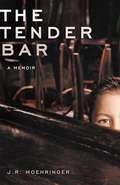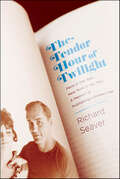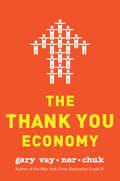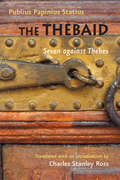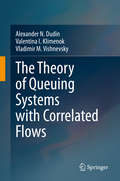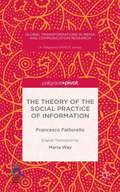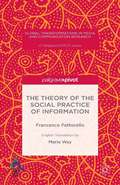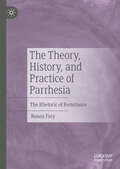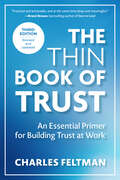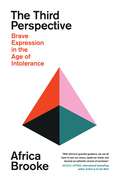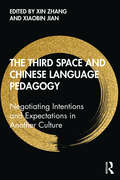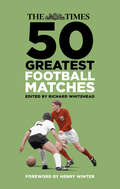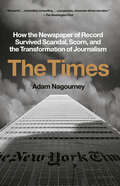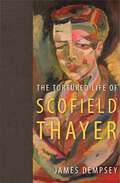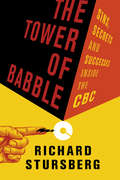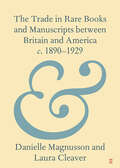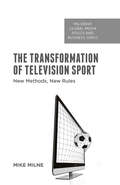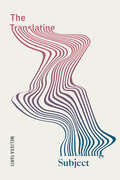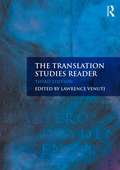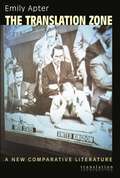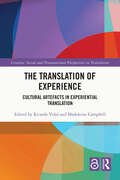- Table View
- List View
The Tender Bar: A Memoir
by J. R. MoehringerAutobiography of a news reporter abandoned by his father, a New York City disc jockey who vanished before J. R. spoke his first word.
The Tender Hour of Twilight: Paris in the '50s, New York in the '60s: A Memoir of Publishing's Golden Age
by Richard SeaverFrom Beckett to Burroughs, The Story of O to The Autobiography of Malcolm X, an iconic literary troublemaker tells the colorful stories behind the storiesRichard Seaver came to Paris in 1950 seeking Hemingway's moveable feast. Paris had become a different city, traumatized by World War II, yet the red wine still flowed, the cafés bustled, and the Parisian women found American men exotic and heroic. There was an Irishman in Paris writing plays and novels unlike anything anyone had ever read—but hardly anyone was reading them. There were others, too, doing equivalently groundbreaking work for equivalently small audiences. So when his friends launched a literary magazine, Merlin, Seaver knew this was his calling: to bring the work of the likes of Samuel Beckett, Eugene Ionesco, and Jean Genet to the world. The Korean War ended all that—the navy had paid for college and it was time to pay them back. After two years at sea, Seaver washed ashore in New York City with a beautiful French wife and a wider sense of the world than his compatriots. The only young literary man with the audacity to match Seaver's own was Barney Rosset of Grove Press. A remarkable partnership was born, one that would demolish U.S. censorship laws with inimitable joie de vivre as Seaver and Rosset introduced American readers to Lady Chatterly's Lover, Henry Miller, Story of O, William Burroughs, The Autobiography of Malcolm X, and more. As publishing hurtles into its uncertain future, The Tender Hour of Twilight is a stirring reminder of the passion, the vitality, and even the glamour of a true life in literature.
The Testimony
by Laura LondonA classic novel from acclaimed author Laura London, for fans of Julie Garwood, Jude Deveraux, Loretta Chase, Johanna Lindsey and Kathleen E. Woodiwiss. For vibrant Christine Ludan, the six months apart from her husband has been a dark time. But now dynamic Jesse Ludan, Milwaukee's controversial reporter, is coming home.Christine yearns for their lives to flow together once again, just as their bodies melt in passionate embrace. But she dares not speak of Jesse's painful experience...and he is reluctant to intrude into her gentle world. They are united by a thousand shared thoughts and feelings, yet sometimes they seem like strangers as they struggle to reaffirm the deeply felt joy that once bound them so intimately together.Fall in love with the richly romantic, classic love stories of Laura London, author of The Windflower, as her beloved novels are released in ebook for the first time.
The Thank You Economy
by Gary Vaynerchuk“Gary Vaynerchuk has seen the future of marketing. The Thank You Economy shows how it's built on both the time-honored techniques of listening to and appreciating customers and newer services like Twitter that allow you to engage directly with customers at unprecedented scale and speed. The book, like Gary, is also a lot of fun and full of passion.” —Dick Costolo, chief executive officer, TwitterGary Vaynerchuk, the New York Times bestselling author and creator of Wine Library TV, is back with a bold and expansive look at the evolution of today's marketplace, revealing the essential factors defining and driving successful relationships between businesses and consumers. In this groundbreaking follow-up to the bestselling Crush It!, Vaynerchuk—one of Bloomberg Businessweek’s “20 People Every Entrepreneur Should Follow”—looks beyond a numbers-based analysis to explore the value of social interactions in building our economy.
The Thebaid: Seven against Thebes (Johns Hopkins New Translations from Antiquity)
by Publius Papinius StatiusA classical epic of fratricide and war, the Thebaid retells the legendary conflict between the sons of Oedipus—Polynices and Eteocles—for control of the city of Thebes. The Latin poet Statius reworks a familiar story from Greek myth, dramatized long before by Aeschylus in his tragedy Seven against Thebes. Statius chose his subject well: the Rome of his day, ruled by the emperor Domitian, was not too distant from the civil wars that had threatened the survival of the empire. Published in 92 A.D., the Thebaid was an immediate success, and its fame grew in succeeding centuries. It reached its peak of popularity in the later Middle Ages and Renaissance, influencing Dante, Chaucer, and perhaps Shakespeare. In recent times, however, it has received perhaps less attention than it deserves, in large part because there has been no accessible, dynamic translation of the work into English.Charles Stanley Ross offers a compelling version of the Thebaid rendered into forceful, modern English. Casting Statius's Latin hexameter into a lively iambic pentameter more natural to the modern ear, Ross frees the work from the archaic formality that has marred previous translations. His translation reinvigorates the Thebaid as a whole: its meditative first half and its violent second half; its intimate portrayal of defeat and retribution, and the need to seek justice at any cost. In a wide-ranging introduction, Ross provides an overview of the poem: its composition, reception and legacy; its major themes and literary influences; and its place in Statius' life. And in a helpful series of notes, he offers background information on the major characters and incidents.
The Theory of Queuing Systems with Correlated Flows
by Alexander N. Dudin Valentina I. Klimenok Vladimir M. VishnevskyThis book is dedicated to the systematization and development of models, methods, and algorithms for queuing systems with correlated arrivals. After first setting up the basic tools needed for the study of queuing theory, the authors concentrate on complicated systems: multi-server systems with phase type distribution of service time or single-server queues with arbitrary distribution of service time or semi-Markovian service. They pay special attention to practically important retrial queues, tandem queues, and queues with unreliable servers. Mathematical models of networks and queuing systems are widely used for the study and optimization of various technical, physical, economic, industrial, and administrative systems, and this book will be valuable for researchers, graduate students, and practitioners in these domains.
The Theory of the Social Practice of Information (Global Transformations In Media And Communication Research)
by Francesco FattorelloThe Theory of the Social Practice of Information.
The Theory of the Social Practice of Information (Global Transformations in Media and Communication Research - A Palgrave and IAMCR Series)
by Francesco FattorelloIn this book, Fattorello addresses the differences between contingent and non-contingent information. The theory is translated into English for the first time and is contextualized and put into a historical framework by Prof. Ragnetti's additional text.
The Theory, History, and Practice of Parrhesia: The Rhetoric of Resistance
by Renea FreyThis book examines the theory, history, and practice of parrhesia—the act of speaking truth to power, when doing so is risky for the rhetor—and argues for a networked rhetorical approach to parrhesia that has not been considered previously by any other theorist. The goal of this book is to offer a reader-friendly explanation of this networked rhetorical approach to parrhesia, provide a genealogical account of the origins of parrhesia in the Classical age, and to show how parrhesia manifests today. This book is meant to give readers a functional manual for understanding, recognizing, analyzing, articulating, and using parrhesia.
The Thesis and the Book
by Siobhan Mcmenemy Eleanor Harman Ian Montagnes Chris BucciThe academic caveat Publish or Perish is not a new one, and for over a quarter of a century, The Thesis and the Book has come to the aid of graduate students in their quest for publication. The doctoral dissertation, usually the first book-length study completed by a scholar, is, however, only rarely publishable as a book. Understanding the differences between the two forms is a crucial part of one's education as a scholar and is equally important in appreciating the endeavours of scholarly publishers. The Thesis and the Book: A Guide for First-Time Academic Authors, revised and expanded in this second edition, will continue to provide the best overview of the process of revising a dissertation for publication.Drawing on the expertise of the contributors, all of whom are editors, publishers, and scholars themselves, the chapters present the rudimentary differences between a thesis and a book (including matters of purpose and audience), give guidance on the necessary stylistic, technical, and structural revisions to the dissertation, and offer advice to first-time authors who must not only revise their work to satisfy prospective publishers, but also learn a good deal of the ins and outs of scholarly publishing.The Thesis and the Book will continue to be of great value to graduating doctoral students seeking publication and to the faculty members who supervise these students. It will also be of value to acquisitions editors at scholarly presses, who must contend with the submission of revised dissertations for publication.
The Thin Book of Trust, Third Edition: An Essential Primer for Building Trust at Work (The\thin Book Ser. #2)
by Charles Feltman“I have used his definitions of trust and distrust in every book I’ve written, because they are practical and actionable and, at the same time, deep and meaningful. It was important to me to dig into these definitions and explore how they play out at work, in relationships, and in our everyday lives.” —Brené Brown, bestselling author of Dare to LeadBest-selling author Charles Feltman updates his business classic, The Thin Book of Trust, with new resources and tools to build trust in the post-pandemic world.Feltman's phenomenal bestseller with almost 100,000 copies sold across two editions outlines in a very simple and quick way the art of building trust between people in organizations as a core essential workplace competency.The updated Thin Book of Trust offers a framework that supports trust building as a workplace competency. It is based on the idea that building trust is a competency, a set of skills that can be learned, improved, and practiced. It will help you continuously improve your ability to build and maintain trust with others. It can also help you create and contribute to a high-trust culture at work.The third edition includes a new study guide and a new resource download page.Charles Feltman says: "Whether you lead others, contribute individually, or serve as a coach, consultant, facilitator, HR or OD professional, your ability to generate and sustain strong trust is critical to the success and well-being of your enterprise. It is my hope this new edition serves you well in becoming an exceptional trust-builder."
The Third Perspective: Brave Expression in the Age of Intolerance
by Africa BrookeAMAZON BEST BOOK OF MAY 2024 In our deeply divided, binary world, honest discussion is stressful for all sides. International thought leader Africa Brooke says there is another way: the Third Perspective. In this manifesto, Africa teaches us how to return to critical thinking and reduce societal divides by opening our minds and being more self-questioning in difficult discussions. This book will help you figure out what you truly believe—as opposed to parroting or having knee-jerk reactions in conversation. You&’ll learn to share your views, hear theirs, make a point you feel must be made, and try to find common ground without self-censorship or self-sabotage. This personal guide helps readers move away from rigid thinking, allowing them to enter any potentially difficult discussion about politics, work, personal responsibility, race, sex, gender, religion — whatever the subject — while maintaining integrity, authenticity, and openness, and successfully expressing opinions while listening to contrary points of view. Africa has built a successful business coaching an exclusive roster of high-profile clients seeking to handle themselves in the public eye. The tools offered in The Third Perspective have been honed over years of that experience: hers is a proven system that works. She offers readers a new path for communication, and because communication is everything, critical to building trust and fruitful relationships, a life transforming experience. Africa Brooke&’s framework has three pillars—Awareness, Responsibility, and Expression—that ask: what is stopping you from speaking your mind, what do you stand for, what are you willing to risk?
The Third Space and Chinese Language Pedagogy: Negotiating Intentions and Expectations in Another Culture
by Xin Zhang; Xiaobin JianThe Third Space and Chinese Language Pedagogy presents the Third Space as a new frame through which foreign language pedagogy is conceptualized as a pedagogy of negotiating intentions and expectations in another culture. The field of Chinese as a foreign language (CFL) in the past decades has been expanding rapidly at the beginning and intermediate levels, yet it is lacking in scholarship on the true advanced level both in theory building and research-supported curriculum and material development. This book argues that it is time for CFL to go beyond merely satisfying the desire of gazing at the other, whether it is curiosity about the other or superiority over the other, to focusing on learning to work with the other. It reimagines the field as co-constructing a transcultural Third Space where learners are becoming experts in negotiating intentions and expectations in another culture. It presents a range of research-based CFL pedagogical scholarship and practices especially relevant to the advanced level and to the goal of enabling learners to go past fans or critics to become actors/players in the game of cross-lingual and intercultural cooperation.
The Times 50 Greatest Football Matches
by Richard WhiteheadFrom the earliest FA Cup finals in the 1870s between teams of former public schoolboys to the glittering world of 21st-century Champions League matches contested by squads of millionaires, The Times has been at pitchside to write the history of football as it has happened.It is story of great matches: Hungary’s historic victory over England at Wembley in 1953, Manchester United’s triumph over Benfica in the 1968 European Cup final, Brazil’s thrashing of Italy in the 1970 World Cup final, Liverpool’s remarkable recovery to win the Champions League in Istanbul in 2005. It is a story of dazzling individual performances: Stanley Matthews finally winning an FA Cup winners’ medal at Wembley in 1953, Bobby Moore giving a masterclass in the art of defending for England against Brazil in the 1970 World Cup, Cristiano Ronaldo’s virtuoso performance as Real Madrid won the 2017 Champions League. It is a story of national highs and lows, from Wembley in 1966 when England ruled the world after defeating West Germany to the humiliation of losing to Iceland in the 2016 European Championship.But above all it is a story of great players, great managers and great personalities in a sport that grips the attention of the world like no other.
The Times: How the Newspaper of Record Survived Scandal, Scorn, and the Transformation of Journalism
by Adam NagourneyA sweeping behind-the-scenes look at the last four turbulent decades of &“the paper of record,&” The New York Times, as it confronted world-changing events, internal scandals, and faced the existential threat of the internet &“An often enthralling chronicle [that] delivers the gossipy goods . . . Like Robert Caro&’s biographies, [The Times] should appeal to anyone interested in power.&”—Los Angeles TimesA KIRKUS REVIEWS BEST BOOK OF THE YEARFor over a century, The New York Times has been an iconic institution in American journalism, one whose history is intertwined with the events that it chronicles—a newspaper read by millions of people every day to stay informed about events that have taken place across the globe.In The Times, Adam Nagourney, who&’s worked at The New York Times since 1996, examines four decades of the newspaper&’s history, from the final years of Arthur &“Punch&” Sulzberger&’s reign as publisher to the election of Donald Trump in November 2016. Nagourney recounts the paper&’s triumphs—the coverage of September 11, the explosion of the U.S. Challenger, the scandal of a New York governor snared in a prostitution case—as well as failures that threatened the paper&’s standing and reputation, including the discredited coverage of the war in Iraq, the resignation of Judith Miller, the plagiarism scandal of Jayson Blair, and the high-profile ouster of two of its executive editors.Drawing on hundreds of interviews and thousands of documents and letters contained in the newspaper&’s archives and the private papers of editors and reporters, The Times is an inside look at the essential years that shaped the newspaper. Nagourney paints a vivid picture of a divided newsroom, fraught with tension as it struggled to move into the digital age, while confronting its scandals, shortcomings, and swelling criticism from conservatives and many of its own readers alike. Along the way we meet the memorable personalities—including Abe Rosenthal, Max Frankel, Howell Raines, Joe Lelyveld, Bill Keller, Jill Abramson, Dean Baquet, Punch Sulzberger and Arthur Sulzberger Jr.—who shaped the paper as we know it today. We see the battles between the newsroom and the business operations side, the fight between old and new media, the tension between journalists who tried to hold on to the traditional model of a print newspaper and a new generation of reporters who are eager to embrace the new digital world.Immersive, meticulously researched, and filled with powerful stories of the rise and fall of the men and women who ran the most important newspaper in the nation, The Times is a definitive account of the most pivotal years in New York Times history.
The Tortured Life of Scofield Thayer
by James DempseyThe influential literary magazine The Dial is regarded as a titanic artistic and aesthetic achievement for having published most of the great modernist writers, artists, and critics of its day. As publisher and editor of The Dial from 1920 to 1926, Scofield Thayer was gatekeeper and guide for the movement, introducing the ideas of literary modernism to America and giving American artists a new audience in Europe.In The Tortured Life of Scofield Thayer, James Dempsey looks beyond the public figure best known for publishing the work of William Butler Yeats, T. S. Eliot, William Carlos Williams, E.E. Cummings, and Marianne Moore to reveal a paradoxical man fraught with indecisions and insatiable appetites, and deeply conflicted about the artistic movement to which he was benefactor and patron. Thayer suffered from schizophrenia and faded from public life upon his resignation from The Dial. Because of his mental illness and controversial life, his guardians refused to allow anything of a personal nature to appear in previous biographies. The story of Thayer's unmoored and peripatetic life, which in many ways mirrored the cosmopolitan rootlessness of modernism, has never been fully told until now.
The Tower of Babble
by Richard StursbergThe CBC is a national obsession. Everyone has an opinion on it. It's too left-wing; it's too right-wing. It's too commercial; it's too boring. The CBC mirrors, reflects and magnifies all the tensions within Canada. The debate about its direction and focus is the debate about what matters to the country.In 2004, CBC television had sunk to its lowest audience share in its history and Radio 2's audiences were on life support. That same year, Richard Stursberg, an avowed popularizer with a reputation for radical action, was hired to run English services.With incisive wit and a flare for anecdote, Stursberg tells the story of the struggle that resulted, a struggle that lasted for six turbulent and controversial years. It's the fascinating story of the attempt to transform the CBC into a broadly popular, audience-focused organization. It is a story about shows, stars, flops, hits, arguments, deals, successes and failures. It is a story that was fought in labour disputes, the press, the board and the government.Shortly after Stursberg arrived, the corporation locked out the employees for two months. He was characterized as a thug and a spineless rat. Four years later, he signed the most harmonious labour contract in the history of the company. He lost the television rights for the 2010-12 Olympic Games, the Canadian Football League, curling and the Hockey Night in Canada song. He won the biggest NHL contract in history, secured the World Cup of Football and produced the biggest sports audiences in decades.He had unprecedented ratings successes - Little Mosque on the Prairie, Dragon's Den and Battle of the Blades. He had terrible flops. He rebuilt the news -- making Peter Mansbridge stand up -- and was roundly criticized for "Americanizing it." He cut 400 jobs and enjoyed the highest levels of trust and support from CBC staff. He antagonized Canada's cultural elites, the media and politicians. He enjoyed the best ratings for radio, television and online in CBC's history.He fought endless wars with the President and the Board about the direction of the Corporation and ultimately was dismissed.This is the story of what was done, why it was done, and why it mattered. It is a story about our most loved and reviled cultural institution during its most convulsive and far-reaching period of change. It is for those who think the CBC has lost its way, those who love where it is, and those who think it should not exist in the first place. It is for those who want argue about the Corporation's place in Canadian society, and for those who simply want to know the gossip about its greatest shows and greatest stars. It is for those who want to know what Don Cherry, Peter Mansbridge, Wendy Mesley and Rick Mercer are really like, as well as those who want to know how to negotiate a deal with Gary Bettman, develop a hit television show or face down enraged classical music enthusiasts and curling fans.It is the story of the best mirror we have to show us who we are.
The Trade in Rare Books and Manuscripts between Britain and America c. 1890–1929 (Elements in Publishing and Book Culture)
by Laura Cleaver Danielle MagnussonThis Element examines the trade in rare books and manuscripts between Britain and America during a period known as the 'Golden Age' of collecting. Through analysis of contemporary press reports, personal correspondence, trade publications and sales records, this study contrasts American and British perspectives as rare books passed through the commercial market. The aim is to compare the rhetoric and reality of the book trade in order to assess its impact on emerging cultural institutions, contemporary scholarship and shifting notions of national identity. By analysing how markets emerged, dealers functioned and buyers navigated the market, this Element interrogates accepted narratives about the ways in which major rare book and manuscript collections were formed and how they were valued by contemporaries.
The Transformation of Television Sport: New Methods, New Rules (Palgrave Global Media Policy and Business)
by M. MilneThe Transformation of Television Sport: New Methods, New Rules examines how developments in technology, broadcasting rights and regulation combine to determine what sport we see on television, where we can see it and what the final output looks and sounds like.
The Translating Subject
by Melissa TantiA recent shift in women’s writing toward multilingual poetics opens the potential for such experimental texts to set up innovative terms of engagement that are queer, feminist, transnational, and decolonizing.The Translating Subject explores how queer women writers use multilingual strategies to create intimacy with the unknown and enable ethical engagement across social, cultural, and linguistic differences. Bringing together theories of the avant-garde with theories of translation, Melissa Tanti analyzes works by three of North America’s most important contemporary experimental writers: Erín Moure, Kathy Acker, and Nicole Brossard. Tanti confirms the radical potential of multilingual writing through close readings of Moure’s multilingual texts, Acker’s overlooked propensity to write in Farsi, and Brossard’s insistence on the importance of writing in languages that are not one’s own. The Translating Subject argues that multilingual writing challenges monolingual norms and what they uphold: limiting conceptions of subjectivity, community, and identity. Drawing on detailed archival research, this book highlights language rights, minoritized languages, and language use, demonstrating that language is full of life-giving possibilities.The Translating Subject proposes that multilingual writing encompasses both an ethos and practical strategies for navigating a life lived in language.
The Translation Studies Reader
by Lawrence VenutiThe Translation Studies Reader provides a definitive survey of the most important and influential developments in translation theory and research, with an emphasis on twentieth-century developments. With introductory essays prefacing each section, the book places a wide range of seminal and innovative readings within their thematic, cultural and historical contexts. The third edition of this classic reader has been fully revised and updated and adds a new section: 2000 and beyond , which includes five new readings. These new readings bring the Reader up to date with recent developments in the field and include articles on translation and world literature and translation and the internet.
The Translation Zone: A New Comparative Literature (Translation/Transnation #16)
by Emily ApterTranslation, before 9/11, was deemed primarily an instrument of international relations, business, education, and culture. Today it seems, more than ever, a matter of war and peace. In The Translation Zone, Emily Apter argues that the field of translation studies, habitually confined to a framework of linguistic fidelity to an original, is ripe for expansion as the basis for a new comparative literature. Organized around a series of propositions that range from the idea that nothing is translatable to the idea that everything is translatable, The Translation Zone examines the vital role of translation studies in the "invention" of comparative literature as a discipline. Apter emphasizes "language wars" (including the role of mistranslation in the art of war), linguistic incommensurability in translation studies, the tension between textual and cultural translation, the role of translation in shaping a global literary canon, the resistance to Anglophone dominance, and the impact of translation technologies on the very notion of how translation is defined. The book speaks to a range of disciplines and spans the globe. Ultimately, The Translation Zone maintains that a new comparative literature must take stock of the political impact of translation technologies on the definition of foreign or symbolic languages in the humanities, while recognizing the complexity of language politics in a world at once more monolingual and more multilingual.
The Translation and Transmission of Concrete Poetry: Translation and Transmission (Routledge Advances in Translation and Interpreting Studies)
by John Corbett Ting HuangThis volume addresses the global reception of "untranslatable" concrete poetry. Featuring contributions from an international group of literary and translation scholars and practitioners, working across a variety of languages, the book views the development of the international concrete poetry movement through the lens of "transcreation", that is, the informed, creative response to the translation of playful, enigmatic, visual texts. Contributions range in subject matter from ancient Greek and Chinese pattern poems to modernist concrete poems from the Americas, Europe and Asia. This challenging body of experimental work offers creative challenges and opportunities to literary translators and unique pleasures to the sympathetic reader. Highlighting the ways in which literary influence is mapped across languages and borders, this volume will be of interest to students and scholars of experimental poetry, translation studies and comparative literature.
The Translation of Experience: Cultural Artefacts in Experiential Translation (Creative, Social and Transnational Perspectives on Translation)
by Ricarda Vidal Madeleine CampbellExperience is a multilayered, cumulative affair with transformation at its core. Its study, a necessary first step for its translation, requires an exploration of embodiment, the senses, and cultural and social environments.The second of two volumes, this book explores how artefacts, as outcomes of experience brought about by the “artistranslator” perform semiotic work. This semiotic work arises through the intervention of their makers but also through their viewers/audience, often through the latter’s direct participation in the artefacts’ creation, which we see as an open-ended process. Drawing on diverse examples from across the world, the chapters explore visual materiality, the digital world and the multisensory nature of artefacts such as monuments, festivals, theatre performances, artworks, rituals, the urban environment and human bodies—the embodied perception of which may draw holistically or variously on the haptic, olfactory, auditory, kinetic or kinaesthetic senses. Throughout the book, experiential translation is framed as a political endeavour that allows experience to be shared across linguistic, cultural, generational or gendered divides in the form of artefacts that facilitate transformation and the acquisition of knowledge.This book and its companion volume The Experience of Translation: Materiality and Play in Experiential Translation include an international range of contributions from graduate students and early career researchers (ECRs) to tenured academics in translation studies, comparative literature, performance arts, fine arts, media and cultural studies, as well as educators, artists and curators. It will be of particular interest to translators and arts practitioners, scholars and researchers in the transdisciplinary field of humanities.
The Translation of Violence in Children’s Literature: Images from the Western Balkans (Routledge Advances in Translation and Interpreting Studies)
by Marija TodorovaConsidering children’s literature as a powerful repository for creating and proliferating cultural and national identities, this monograph is the first academic study of children’s literature in translation from the Western Balkans. Marija Todorova looks at a broad range of children’s literature, from fiction to creative non-fiction and picture books, across five different countries in the Western Balkans, with each chapter including detailed textual and visual analysis through the predominant lens of violence. These chapters raise questions around who initiates and effectuates the selection of children’s literature from the Western Balkans for translation into English, and interrogate the role of different stakeholders, such as translators, publishers and cultural institutions in the representation and construction of these countries in translated children’s literature, both in text and visually. Given the combination of this study’s interdisciplinary nature and Todorova’s detailed analysis, this book will prove to be an essential resource for professional translators, researchers and students in courses in translation studies, children’s literature or area studies, especially that of countries in the Western Balkans. .
